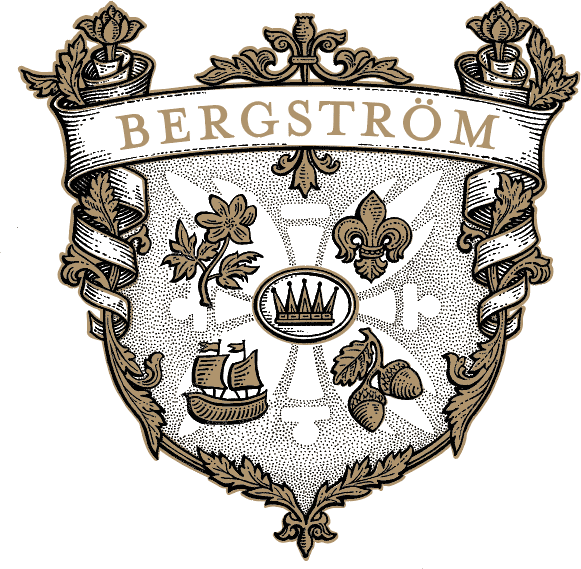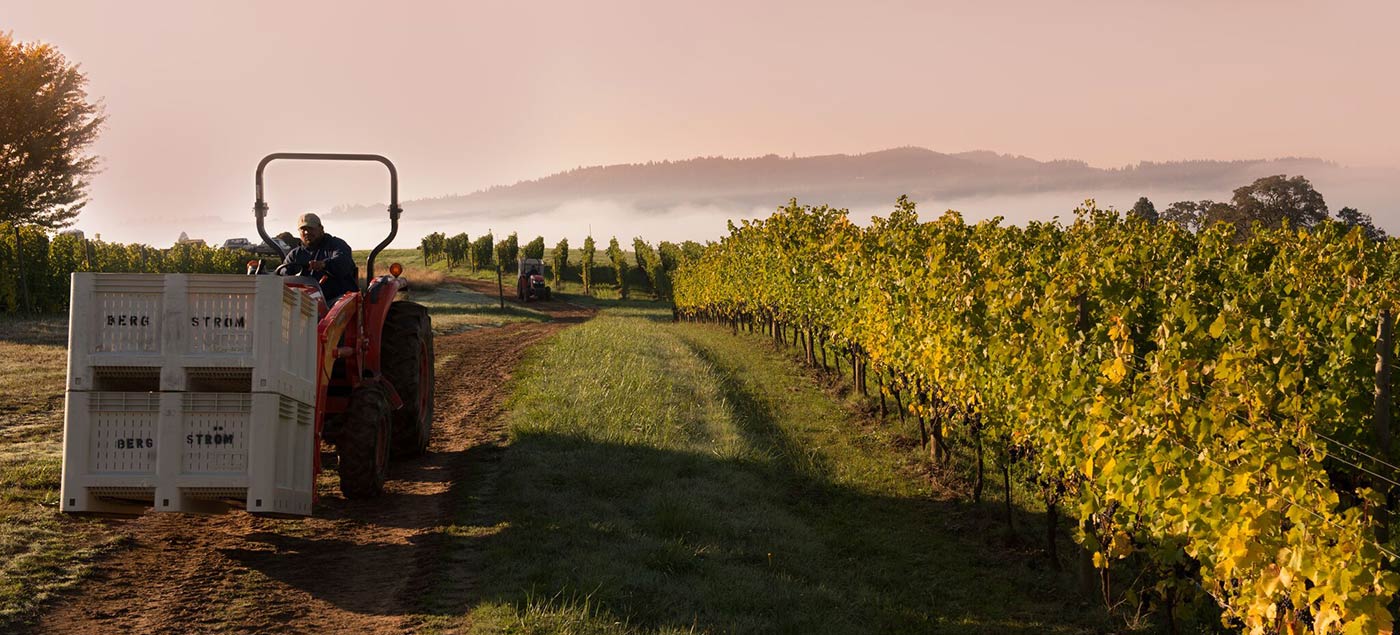 On Monday morning of this week I assembled my staff and family, 12 of us in all, to participate in a very special blind tasting of some very special white wines. We gathered at the Alison Inn and Spa in Newberg in a private board-room at 10 AM, pencils and paper and noses and tongues ready to record what would happen next.
On Monday morning of this week I assembled my staff and family, 12 of us in all, to participate in a very special blind tasting of some very special white wines. We gathered at the Alison Inn and Spa in Newberg in a private board-room at 10 AM, pencils and paper and noses and tongues ready to record what would happen next.
Since we started producing the “Sigrid” and “Old Stones” Chardonnays at Bergstrom Wines (2006 was the first year of production), I have been on a crusade to enlighten and educate people about the wonders of classically styled and structured Chardonnays. The most Noble of all white grapes (sorry Riesling freaks and geeks!), Chardonnay has been produced for hundreds and hundreds of years and hails from Burgundy where it grows happily side by side with Pinot Noir. Funny enough, it also grows side by side Pinot Noir in Champagne, California and Oregon too. So why are so many people making Pinot Gris in Oregon? Well, that’s a discussion for another time.
Unfortunately, Chardonnay’s great name has been damaged, no….bastardized, over the past several decades, as a sea of factory-made swill has flooded the planet from all corners of the globe leading the consumer to believe that Chardonnay should be yellow syrup that smells like vanilla-infused buttered popcorn. Many small artisan producers from Burgundy to the Sonoma Coast of California to Napa and up to Oregon and across the sea to New Zealand and Australia have to work very hard nowadays just to get a client to allow them to even pour Chardonnay into their glasses. People are too scared of what their taste buds might encounter.
I remind people all the time when I travel that you can find Chardonnay in the market for any price between $5 per box of wine and upwards of $2,000 per bottle at auction and at every price-point in-between those two extremes. Like Pinot Noir, Chardonnay only grows and performs well in few choice areas of the world where the farmer must be savvy enough to pair the right plant material with the right soils, on just the right slopes and farm it meticulously with low yields to then handle it gently enough and patiently enough in the winery so as to bring forth a great nectar with great potential. Heck, let’s face it; nowadays if we can just get past the first step of the farmer even choosing to plant Chardonnay in the first place, then we’re on the right track or even have a place to start this discussion!
The problematic reality is that Chardonnay, like Pinot Noir, takes incredible investment of dollars and time and patience (as a producer of the wine) followed by incredible investment in the marketplace (as a seller of the wine) as we roll that boulder up-hill trying to bring the wine-lover back into the fold and accept great Chardonnays as just that….great, and worth the effort.
But when Chardonnay is great, it is amazing. It is a nectar that fills our senses and visions and imagination with flower blossoms on fruit trees, saffron and other rare spices, wet- stones and citrus fruit, walled-up ancient vineyards farmed by hand, food pairings of Dungeness crab, and lobster and oyster plates, and caviar washed down with refreshing electricity in a glass, and……. Well, you get the point: I love Chardonnay.
So I decided to take this thought and ask my staff these questions: What does World-Class Chardonnay really mean? What do you think makes a great Chardonnay great? I know what the critics have called great Chardonnay, but do you necessarily agree? Is Burgundy the greatest Chardonnay ever or is the new-world giving it a run for its money?
Only one way to find out the answers to some of these questions: taste some great Chardonnays. And that’s what we did
Now here is the disclaimer: I had to buy all of these wines and I had to buy at least 4 bottles of each of these wines in-case of cork-taint or other flaws and in hopes of re-staging this tasting again in a few years to see if our favorites and least favorites changed with time into something greater or less-appealing. So that means that I could not afford to put DRC’s Montrachet on the list. I actually couldn’t afford to put most Montrachets on this list which is unfortunate because I believe that this vineyard could quite possibly be one of the quintessential Chardonnays in the world. I also could not find quantity of some of my favorite but very, very hard to find producers like “Coche-Dury”, “Comtes Lafon”, “Ramonet” , “Niellon”, “Raveneau”, “Dauvissat” and others. But believe me, I am on the hunt.
I also made the difficult decision to not include wines from Australia, New Zealand, Washington, Canada’s Niagra region, Argentina and Italy for simplicity’s sake ONLY. I believe that there are some amazingly authentic and relevant Chardonnays coming out of these areas. And let’s face it; as an Oregon producer trying to convince your staff, if not the rest of you, that Oregon can produce world-class Chardonnays, I had to put the biggies of Burgundy and California in my cross-hairs. We’ll take on the rest of the world somewhere down the road.
Also, (yikes, another disclaimer!?!?) There are many other great Chardonnays being produced in Oregon that were not put into this tasting for the same reasons as above: logistics and time. We have many friends who are well-entrenched in the effort of hand-crafting world-class Chardonnays from Oregon and their wines are worth tasting.
What we did do was put together a tasting of some of my favorite producers from three areas: Oregon, Burgundy and California, all sharing these elements in common:
- These are small to medium sized artisan producers
- These are superstars in their field
- These are people who really care about Chardonnay. In many instances, they only produce Chardonnay.
- The budget was anywhere from $25-$400 per bottle but most wines fell into the $90/bottle average.
- All wines received high scores from Robert Parker’s Wine Advocate (91-97 points.) ( Note: I use the scores as a baseline of reference only. There were only two of thirty wineries that do not submit their wines to the Wine Advocate whereas other critics do not rate many of these producers. The most important notion here though is that we had no clue of price or score or producer at the time of tasting or before the tasting. The price and score and producer were only revealed to the tasters after all thirty wines had been tasted and discussed. )
- I could actually find their wines in some quantity.
The goal of the tasting was as follows:
- See where Bergstrom Wines stood amongst our peers.
- This was not a competition, so wines were not force-ranked.
- Tasters all mentioned their favorite 3 wines and least favorite wine of each flight of ten wines.
- Education
- Hopefully, enlightenment.
So………
Here is what we tasted:
Flight #1 (not in the order poured):
- A. Bergstrom “Sigrid” 2007 (Oregon)
- B. Arnaud Ente “Les Petits Charrons” 2007 (Burgundy)
- C. Bonneau du Martray Grand Cru “Corton Charlemagne” 2007 (Burgundy)
- D. Domaine Leflaive Bienvenue Batard Montrachet 2008 (Burgundy)
- E. Domaine Roulot, Meursault “ Les Tessons ,Clos de mon Plaisir” 2007 (Burgundy)
- F. Argyle, “ Nuthouse” 2007 (Oregon)
- G. Joseph Drouhin, Chablis Grand Cru “Les Clos” 2007 (Burgundy)
- H. Jean Paul Droin Chablis Grand Cru “Valmur” 2008 (Burgundy)
- I. Bergstrom “Old Stones” 2007 (Oregon)
- J. William Fevre Chablis Grand Cru “Vaudesir” 2008 (Burgundy)
Flight #2 (not in the order poured):
- A. Bergstrom “Sigrid” 2008 (Oregon)
- B. Bergstrom “Old Stones” 2009 (Oregon)
- C. Dominique Lafon “Meursault” 2008 (Burgundy)
- D. Littorai “Charles Heintz” Vineyard 2008 (California)
- E. Domaine Drouhin, Beaune Premier Cru “Clos des Mouches” 2008 (Burgundy)
- F. Evening Lands “Summum” 2008 (Oregon)
- G. Arnaue Ente “Close des Ambres” 2007 (Burgundy)
- H. Domaine Roulot, Meursault “Meix Chavaux” 2007 (Burgundy)
- I. A.F. Jobard Meursault Premier Cru “Poruzots” 2007 (Burgundy)
- J. Kistler “Kistler Vineyard” 2007 (California)
Flight #3 (not in the order poured):
- A. Bergstrom “Sigrid” 2006 (Oregon)
- B. Kistler “Vine Hill” Vineyard 2007 (California)
- C. Ramey “Ritchie” Vineyard 2007 (California)
- D. Du Mol Napa Valley cuvee “Isobel” 2007 (California)
- E. Bergstrom “Sigrid” 2009 (Oregon)
- F. Cameron “Clos Electrique” 2006 (Oregon)
- G. Domaine Joseph Drouhin “Clos des Mouches” 2006 (Burgundy)
- H. Kongsgaard Napa “the Judge” 2008 (California)
- I. Evening Lands “La Source” 2008 (Oregon)
- J. Brewer Clifton “ Rancho Santa Rosa” 2007 (California)
The tasting was great! Amazing! Exactly what I was looking for! It revealed so much and it was so much fun trying so many well-crafted wines side by side in one sitting. Personally, I felt like a kid in a candy shop……30 wines and I had absolutely zero palate-fatique, I wanted even more! I can’t wait to structure the next tasting.
Me and my family and our staff had good discussion and, once the wines were revealed, we were so excited to find how balanced the results were and how great our wines and the wines of Oregon had fared in this tasting.
What we discovered from a purely Bergstrom perspective was that; in cooler Oregon years, our wines and other Oregon wines can compete very well with some great Burgundies, and in warmer Oregon years, our wines can compete with some great California wines. And when I say we can compete, I don’t mean we can play a mean second fiddle to the lead bow-man, we can craft wines of equal quality, showing the same level of freshness, balance, minerality, intreague, authentic and purity.
What we discovered from a world-perspective was that; the level of Chardonnay quality across the board is very high, but even the best producers of Chardonnay made the simplest mistakes that a small producer could or would make with their quality-control regime. We also were surprised at how different and unique these wines all were with multiple flavors, aromas and textures, I found each wine to be invigorating.
And we found that after a very long Chardonnay tasting, a great charcuterie plate and a good glass of Pinot Noir is definitely the key!
It is an exciting time to be an Oregon Chardonnay farmer and winemaker, that’s for sure! And, if you have not been to “Jory” restaurant at the Allison in and Spa in Newberg, you should, we enjoyed a fantastic lunch with very professional service and a very high standard of cooking and an elevated style of cuisine. Delicious!




